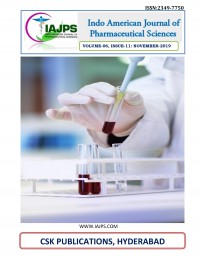
TITLE:
A CRITICAL EVALUATION ON IDENTIFICATION OF RISK FACTORS OF DIABETIC KETOACIDOSIS AND ITS EFFECT ON PATIENTS
AUTHORS:
Dr Sidra Hanif, Dr Muhammad Awais, Dr. Qasim Mahmood Ghouri
ABSTRACT:
Background: Diabetic ketoacidosis (DKA) is life threating which affects people with diabetes. It needs early diagnosis and proper management. For the sake of preventive measures, risk factor must be known. Objective: This study aimed at identification of risk factors of diabetic ketoacidosis and its effect on patients. Design of study: It was a case-control study. Duration: Study was done from Feb, 2017 to Jan, 2018. Patients and Methods: This study was done in medicine department of LGH, Lahore. 100 patients above 13 years of age suffering from diabetes were selected. 50 patients were enrolled as cases having KDA. Age and sex matched control was selected for each case. 50 patients in control group were diabetics. Primary end point was noted. Patients died during word stay or in emergency room. Alive patients discharged. SPSS version 21 was used for statistical analysis of data. Results: Maximum diabetic ketoacidosis was observed in 4th decade in patients. 10% patients of DKA died while 90% were discharged alive. 50% cases showed infections, poor following of medication on the part of patients (44%), new diagnosis (16%). These percentages are far greater than that of control group stroke, myocardial infarction, acute pancreatitis, dehydration and trauma were identified as major risk factors. Conclusion: Newly diagnosed diabetes, infections and improper following of medication increases risk for diabetic ketoacidosis. Keywords: Diabetic Ketoacidosis, Diabetes Mellitus, Risk factors.
FULL TEXT
Cover Page














